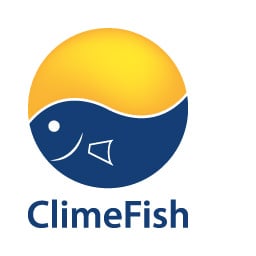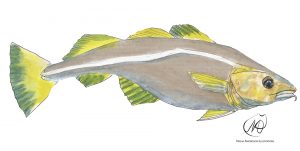Atlantic cod (Gadus morhua)
The Atlantic cod is a benthopelagic fish of the family Gadidae, widely consumed by humans.
In the western Atlantic Ocean, cod has a distribution north of Cape Hatteras, North Carolina, and around both coasts of Greenland and the Labrador Sea; in the eastern Atlantic, it is found from the Bay of Biscay north to the Arctic Ocean, including the Baltic Sea, the North Sea, Sea of the Hebrides, areas around Iceland and the Barents Sea.
The largest individual on record was 6 feet (1.8 m) long and weighed 211 lb (96 kg), however usually the cod is between 24 inches (61 cm) and 4 feet (1.2 m) long, and weighs 88 lb (40 kg).
Atlantic Cod can live for 25 years, and usually attains sexual maturity between ages two and four, although cod in the northeast Arctic can take as long as eight years to fully mature.
Several cod stocks collapsed in the 1990s (declined by >95% of maximum historical biomass) and have failed to recover even with the cessation of fishing. This absence of the apex predator has led to a trophic cascade in many areas. Many other cod stocks remain at risk.
The Newfoundland and Labrador region off Canada includes major fish species of interest to ClimeFish participants, like cod. Their decadal trends in productivity within these regions will be evaluated and forecast by extending existing habitat template approaches developed and initially tested.
The task of the Canadian participant in ClimeFish is to predict locations and species that can be expected to sustain fisheries development in the regions, while minimizing impacts on those locations and species that are characterized by higher vulnerability to fisheries disturbances.

